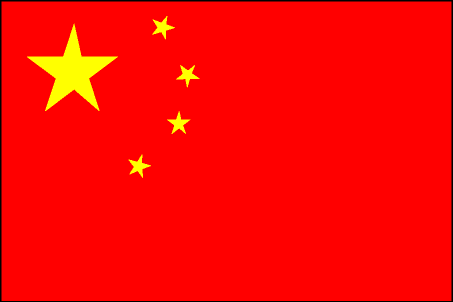Fitch Ratings-Hong Kong/Shanghai-06 August 2020: Connection deadlines to secure wind-power subsidies are likely to boost investment by Chinese power generators (gencos) in 2020-2021, says Fitch Ratings. Meanwhile, state-owned gencos are set to lead greenfield solar development to diversify their fuel mix, which we expect will reverse the segment’s dominance by private gencos. The high investments in solar and wind energy will see leverage at state-owned gencos rise in 2020.
China’s wind power investment climbed by 152% yoy in 1H20, to account for almost half of total power generation investment; the highest proportion on record. We expect capex for offshore wind, which saw installations increase by 165% yoy in 1H20, to remain high until end-2021, the deadline to lock in higher feed-in tariffs that were approved before 2020 and offer subsidies of CNY0.35-0.45/KWh. Subsidies will be lower for gencos that fail to meet the deadline and the reallocation of subsidy disbursement from the central to the provincial level post 2021 may create uncertainty and push gencos to speed up construction.
The drive to secure subsidies by the end-2020 deadline saw onshore wind installations account for 15% of total installations in 1H20. However, onshore wind installations are slowing, dropping by 20% yoy in 2Q20, and we expect a much greater investment slowdown in 2021, after which time subsidies will no longer apply. A fall in onshore wind-farm investment should ease the tight supply in the upstream wind-turbine generator sector, leading to lower unit costs and more favourable equipment procurement terms. We think this will moderate the impact of lower tariffs on gencos’ profit and cash flow in absence of subsidies.
At the same time, solar power investment accounted for 8% of total power generation investment, up by 4% yoy. We expect solar investment to be increasingly led by state-owned gencos, which have been more active in this year’s bidding for subsidised projects and accounted for 65% of approved subsidised capacity. This was up by 35pp yoy and in contrast to 2019, when bidding was dominated by private companies. Many state-owned gencos have also seen unsubsidised solar project capacity double from last year, with 15 provinces already announcing the bidding results by mid-June.
The solar business expansion of state-owned gencos reflects the need to pare down coal-fired power dependence, as the central government pushes for higher consumption of renewable power. State Power Investment Corporation Limited (A/Stable), one of China’s top-five state-owned gencos, is leading the expansion, having won 7% and 9% of subsidised and unsubsidised solar project bidding, respectively, in 2020. Other state-owned gencos, including China Huaneng Group Co., Ltd. (A/Stable) and China Huadian Corporation Ltd. (A/Stable), accounted for 5% and 4%, respectively, of subsidised solar project bidding. In addition, China General Nuclear Power Corporation (A/Stable), China’s nuclear power-focused clean-energy producer, which is supervised by the central government, subscribed to 3.5GW of greenfield solar power capacity, amounting to 4% of total capacity.
Subsidy collection delays, which impaired the debt servicing of solar farms built before 2019, will no longer be much of an issue for greenfield projects, which are less reliant on subsidies. The average 2020 subsidy is only 6%-12% of the tariff, compared with 35%-50% for brownfield projects, with the lowest bids containing almost zero subsidies.
Continuous technological breakthroughs and greater economies of scale should also reduce module costs and enable gencos to maintain returns in the absence of subsidies. However, a series of accidents that disrupted the operation of a major polysilicon production base in Xinjiang, in northwest China, has pushed up costs along the solar value chain. This could also result in fewer unsubsidised solar capacity additions than what was approved for 2020.
We expect non-hydro renewable power to drive capex spending for state-owned gencos in 2020 and 2021, with offshore wind accounting for the majority of non-hydro renewable investment. Offshore wind, which is of larger scale, has higher unit capex than onshore wind and solar, but also brings higher utilisation hours and margins. We expect offshore wind capex to increase debt before earnings contributions kick in.
Debt at state-owned gencos may also be pushed up by debt-funded acquisitions of brownfield renewable assets from private gencos, some of which saw operating cash flow further tightened by subsidy delays in 1H20 and are finding it more difficult to service debt. Others may sell brownfield projects to remove subsidy-heavy projects from their portfolios, reduce total debt and source funding to cover the equity component of greenfield project development.
As a result, we do not expect state-owned gencos to continue their deleveraging trend from 2019. However, leverage pressure should be moderated by a 2H20 recovery in power sales volume, though earnings may be constrained by a resurgence of market trading from 2Q20 and the coal-price rebound since May. Ample low-cost funding options for state-owned gencos will also mitigate liquidity and debt servicing pressure.
Over the medium term, we believe the credit profiles of most state-owned gencos will remain framed by coal-fired power, which continues to dominate the fuel mix. However, a higher share wind and solar power generation should improve cash flow stability and profitability. Compared with coal-fired power, wind and solar energy enjoys dispatch priority and have more stable margins, as output is entitled to pre-determined tariffs and is not exposed to fuel cost volatility.


